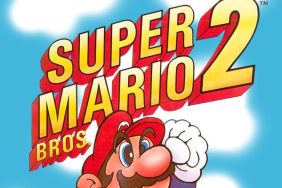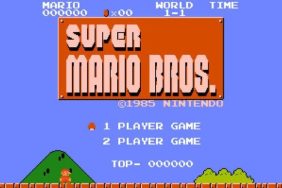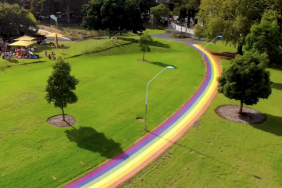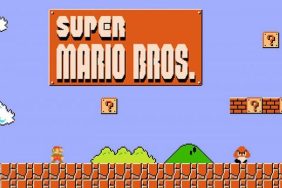Critiques of Nintendo games are often rife with synonyms for the word “fun.” Their presence is hardly misplaced; if asked to sum up the lion’s share of Nintendo experiences as briefly as possible, I’d likely deliver a similar lexical assortment. Still, there are cases where fun as a descriptor can be a cop-out. Stopping at fun to describe Super Mario 3D World, for example, robs it of the inventiveness and raw idea-power steeped and filtered carefully into each of its eight playable worlds. Quite literally years of meticulous level planning, all for a congratulatory sticker that reads “fun.” The Galaxy series managed to transcend such branding, but little else in Mario’s pantheon has.
Yet, when it comes to Mario Kart, I can’t imagine a word more well-suited than “fun” to pay the utmost appreciation to a momentous development effort. After all, what is Mario Kart without frenetic local multiplayer, perhaps the earliest denotation of pure fun in the gaming medium? Expect to experience refined, well-tempered kart racing (the game improves greatly upon its predecessors in this regard), alongside a visual presentation that can finally be considered truly handsome, truly HD, and — for those concerned with such labels — truly next-gen. If your 12-year-old self saw Mario Kart 8, his first instinct would be to pinch his arm and wake up.
The urgency of the situation Mario Kart 8 releases into is not lost on Nintendo, and as a game tasked with single-handedly saving its flagging console host (or at least tent-poling to Super Smash Bros. this holiday), that urgency translates to remarkable attention to detail in most areas. The mechanics of racing alone demonstrate this; on a given course you’ll need to manage a slew of old and new items, properly power slide in accordance with the weight and attributes of your custom kart, account for the resulting boost or double-boost determined by the slide’s length, perform tricks when launching off jumps, perform y-axis steering when your hang glider deploys — and that’s just scratching the surface. Even Mario’s signature bellowing of the game’s title — normally calm and collected despite clear excitement — is high-pitched and strung-out here, as if the plumber harbors secret concern over Wii U’s current predicament.

Mario Kart 8 sports an impressive 32 tracks, with 16 selections from past Mario Kart entries and 16 entirely new locales. I’m all for nostalgia, but the new tracks were far and away my favorites, largely in part because they’re so gorgeous and cleverly built. Cloudtop Cruise is a clear standout, its path weaving across massive recumbent beanstalks as rays reflect from their watery dew. Lightning strikes boost-pads inside a bulky storm cloud, only to launch the driver back into the sun at high speed atop a pounding, caffeinated remix from Super Mario Galaxy. Elsewhere, Mount Wario is divided into sections rather than laps, the entire race a frantic downhill marathon that not once repeats itself. Some areas are snowy and spotted with trees, hardly indicating a clear path at all, while one stretch is an actual slalom race that proves highly liberating if your cart is equipped to maneuver between the gates. As someone who skipped Mario Kart 7, I also quite enjoyed Piranha Plant Slide, a trip through piranha-infested sewers, and Music Park, a course comprised of enormous music notes and instruments.
Kart customization plays a larger role than you might expect in an arcade racer, and the more Nintendo pushes this, the better. The company clearly wants you to enjoy designing a kart that suits your style first and foremost (access to stats requires a second button-press), but once you do start fine-tuning, you’ll probably never go back. Over time I even began to memorize specific configurations to best fit particular racers and situations. Peach, a medium-weight character, seemed a perfect match for a sleek motorcycle body and top-shelf racing tires; this arrangement lets her burn most opponents on straightaways, yet still edge around tight turns reasonably well, reaping the benefit of a slide-induced boost. Shyguy, on the other hand, was usually equipped with a minuscule “Mr. Scooty” moped, complete with button-tires and a Lakitu cloud glider for maximum acceleration. The possibilities are surprisingly broad given the three components you have access to, and the more you unlock (mainly via coin collection through the various modes), the more options become available.
I spent most of my time with Grand Prix, but I suspect that will change in both offline and online play the more time I spend with the game. Time Trials allow for testing of pure skill sans-distracting items (you do get three mushrooms for well-timed speed boosts), and despite the lack of a traditional online leaderboard (something that is apparently against Nintendo’s in-house doctrine), you are able to download ghost data to compete with. Once you defeat the current ghosts, you can download more. This includes competing with friends too of course, so the potential for one-upping your real-life kart buddies is pretty near limitless.

That said, one-upping is best experienced with your pals in the same room, and more so than ever this is where you’ll have the most fun with Mario Kart 8. I introduced the game to a group of five or so friends after logging about 20 hours myself, and despite my tendency to defeat CPU-controlled racers more often than they did, they still bested me plenty often with the little to no experience they collectively had. That’s the beauty of Mario Kart, really — an opportune Red Shell or table-turning Bullet Bill can send you from worst to first in the blink of an eye. The one frustrating mainstay, the Blue Shell, has been somewhat mitigated by a Super Horn that can destroy it, and when you consider that most other attacks can be fended off using a standard Green Shell as defense, you realize that frustration has been very near stripped-out entirely from this Mario Kart affair. It can still occasionally feel cheap when the CPU bests you in such a manner, but that’s the nature of the beast. For me, occasional contempt toward Koopalings hurling shells is what kept me playing.
Which brings me to character selection: all 9 of Bowser’s minions have been included, alongside a swath of babies and some metallic renditions of existing racers. While I’ll admit that Pink Gold Peach isn’t the most thrilling of additions, I personally found the Koopalings to be a welcome inclusion, and far more varied than I expected. Remember, this isn’t like Smash Bros; Nintendo can only draw from the Mario universe here, and including the Koopalings will go a long way in establishing them as characters people know by name. I never remember thinking “oh no, it’s Wendy!” when facing a mini-boss in Super Mario 3D World, but henceforth I most likely will.
You may have heard that Battle Mode has been altered here, and if you’re a Battle junkie the absence of arena-style courses is definitely going to sting a bit. Instead, you’ll be driving around largely vacant full-size courses, and despite the presence of 12 racers, it’s just not as chaotic. It’s fun, and as someone who never thrived on Battle Mode I don’t mind all that much, but it’s something you should definitely know about. A handful of Kart fans are probably going to be disappointed by the change. Luckily, new features like Mario Kart TV help hide any blemishes, and despite the highlight reels’ repetitiveness over time, I definitely enjoyed re-watching devastating blue-shell shots, not to mention viewing the surprisingly robust trick system in slow motion. YouTube export works well, and though the video quality can get a bit artifact-y, it’s a nice feature to have.

Before wrapping up, it’s important I mention the game’s soundtrack and touch again upon presentation in general. Mario Kart 8 is a Nintendo heavyweight through and through. Not only is the soundtrack recorded by a live band in most cases, but it features awesome big band jazz arrangements that brilliantly toe the line between dorky and completely hip; musicians will definitely get a kick out of it. It’s like Bob Mintzer and Koji Kondo got together and fused their sounds as a terrible joke, only to realize the end result was fantastic. In fact, everyone else will probably enjoy MK8’s tunes too, and there’s enough variety (Moo Moo Meadows’ ecstatic violin antics are a personal favorite) to offer something for everyone to enjoy. Visually, the 60 frames per second HD graphics look sublime, and though certain courses resemble old assets gussied up for Wii U (mainly tracks carried over from Mario Kart 7), the overwhelming majority seem constructed from scratch for maximum eye candy. If the screenshots have you on the fence, trust me when I say you need to see it in motion. This game will transform your opinion of Wii U, especially if you haven’t played Super Mario 3D World.
Ultimately, it’s very difficult not to give Mario Kart 8 my highest recommendation. Indeed, the only thing holding it from a perfect score is the lackluster Battle Mode and, despite ample polish, an absence of any truly groundbreaking additions. Still, despite the famous plumber’s anxious screech at the game’s title screen, Mario Kart 8 is the most refined series entry to date, and in my mind elevates Mario Kart from something I take for granted to a genuine triple-A encounter. It’s obviously a Wii U must buy, but perhaps more importantly, it’s a system centerpiece you’ll want to show off to everyone who hasn’t tried it yet. A few more of these, and perhaps Mario’s blood pressure will return to normal. Keep em’ coming, Nintendo.

Griffin Vacheron is a Writer for CraveOnline. You can follow him on Twitter @novacav.
Wii U copy provided by publisher. Mario Kart 8 is exclusive to Wii U.








